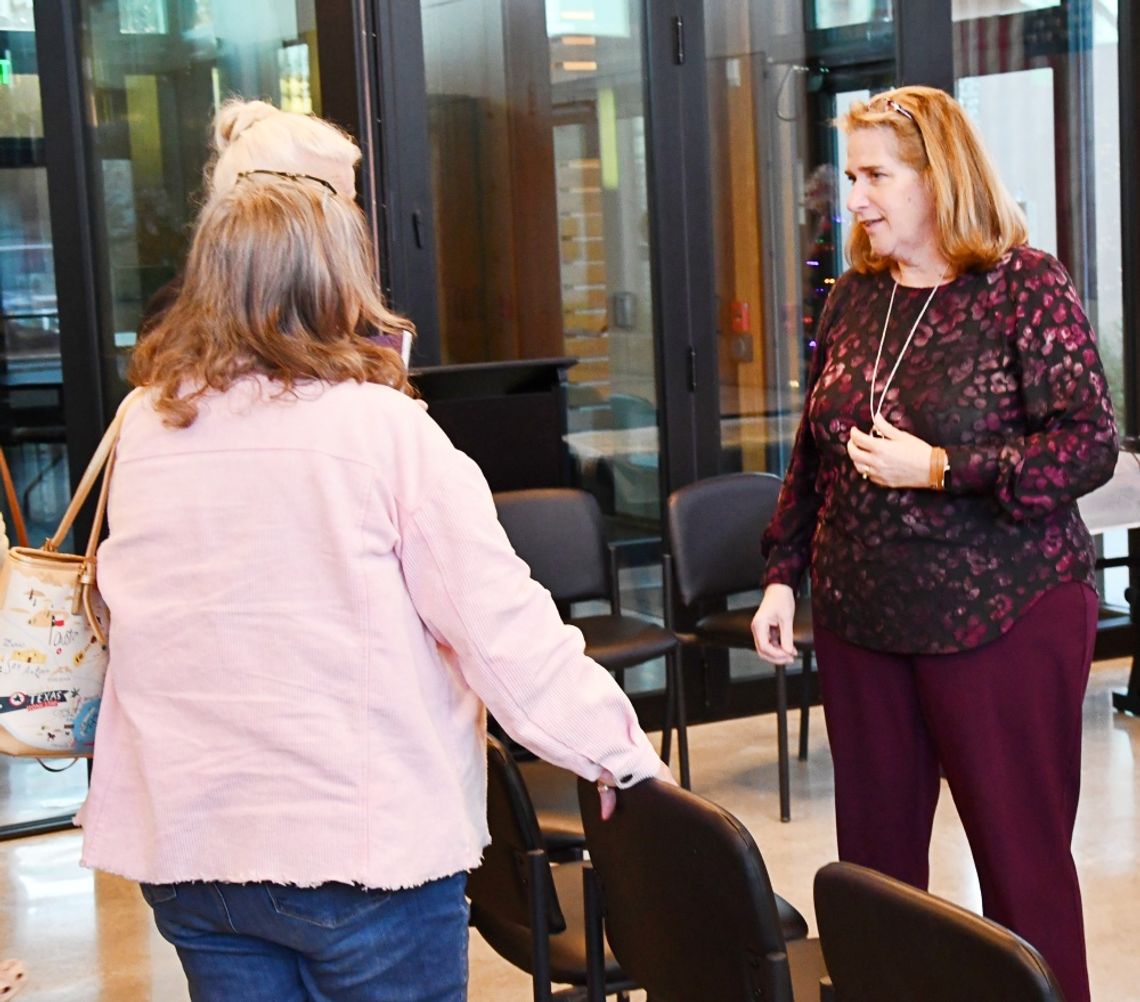On Dec. 11 at the monthly meeting of the Faith and Freedom Club of Medina, Jayne Ramblin was honored as Medina’s 2023 Volunteer of the Year.
Ramblin supports many activities in Medina but has been a big supporter of Shroyer’s Faith and Freedom Club. She assists Shroyer each month with set up and her cheerful greeting welcomes audience members to the meetings.
After the short presentation, Bandera County Emergency Management Coordinator Judy Lefevers gave a well-researched presentation on the historic 1978 flood. Lafevers and her husband retired to the Texas Hill Country last year after working along the Gulf Coast in emergency management.
Lafevers was drawn back into the field by an offer from Judge Evans she just could not refuse. She drew on information and research from the National Weather Service, the Bandera County River Authority and the Frontier Times Museum. She set up the situation first.
The Hill Country was in the midst of a severe drought. Tropical Storm Amelia made landfall over the Texas coast at Corpus Christi on July 31. By Aug. 1, the tropical storm moved inland and stalled over the headwaters of the Medina and Guadalupe Rivers.
The area received 32 inches of rain in 24 hours. Within the totality of the event, Medina recorded 48 inches of rain. Without warning the rivers and creeks in the area flooded. These waterways crested far above normal levels and rose dramatically.
Lafevers showed a satellite view of the Hill Country with the “core rain center” visible right over the Hill Country.
Homes and valuables were swept away down the river. People were stranded on the roofs of houses and in trees. Fourteen lives were lost along with numerous horses and cattle. Property damage was estimated at 50 million dollars. Lafevers noted that in today’s dollars that would be 150 million dollars.
The Bandera Electric Coop lost its building and pole yard. Sixty percent of the BEC customers lost power. The Medina River crested at 46.62 feet, which is still the record by 10 feet. The water even inundated Main Street in Bandera for the first time.
Seven homes were washed away in Camp Bandera and 8 of the 14 lives lost were from that area.
Lafevers showed several historic photos of the area at the time. She remarked that many people had no warning that the river was rising so quickly and were caught unawares. Lafevers noted that the pictures showed “waves” in the river that were not typical of usual flooding.
A picture of the original death toll showed that 8 were lost in the Camp Bandina area, 2 were lost in town and 4 were lost in the Peaceful Valley area. Lafevers also noted that all of the deaths occurred in the floodplain as opposed to the current trend of dying in cars washed away in flood waters.
The aftermath of the historic flood, according to Lafevers, was that a resilient community came together to assist each other recover from the devastation. Federal Emergency Management assistance was available, although several audience members recounted that they didn’t get much assistance.
Another result of the flooding was the installation of the Flood Early Warning System. This early warning system of river gauges set along the Medina River and area creeks helps monitor water levels in real time. According to local sources, information at the headwaters of the Medina River can predict what the water level will be in Bandera in the event of localized flooding. The gauges give the county an eight-hour lead on conditions that are likely to occur downstream.
Lafevers showed pictures and data from the flood in 2002 to show how the system was able to accurately predict where flooding would occur. The hydrologic gauges show real time rain intensity, water surface stage, river water flow and when this data is combined the river travel time is predictable.
This information goes into forming a flood warning projection. According to Lafevers the FEWS is a significant factor in reacting to on-going weather situations. Lafevers then discussed what methods of information distribution the county would use should flooding be presumed.
Lafevers opened the floor to questions. Local photographer Lynn Post spoke about his experiences with the 1978 flood. He recounted what he saw and heard as the water rushed down the river near his home. He regaled the audience with stories and tales of his ride in a rescue helicopter.
The next meeting of the Faith and Freedom Club will be on January 8 at the Rodney Camp Pavilion at the Medina Community Library. Reception will be at 3 p.m. and the speaker will be at 4 p.m.






.png)
